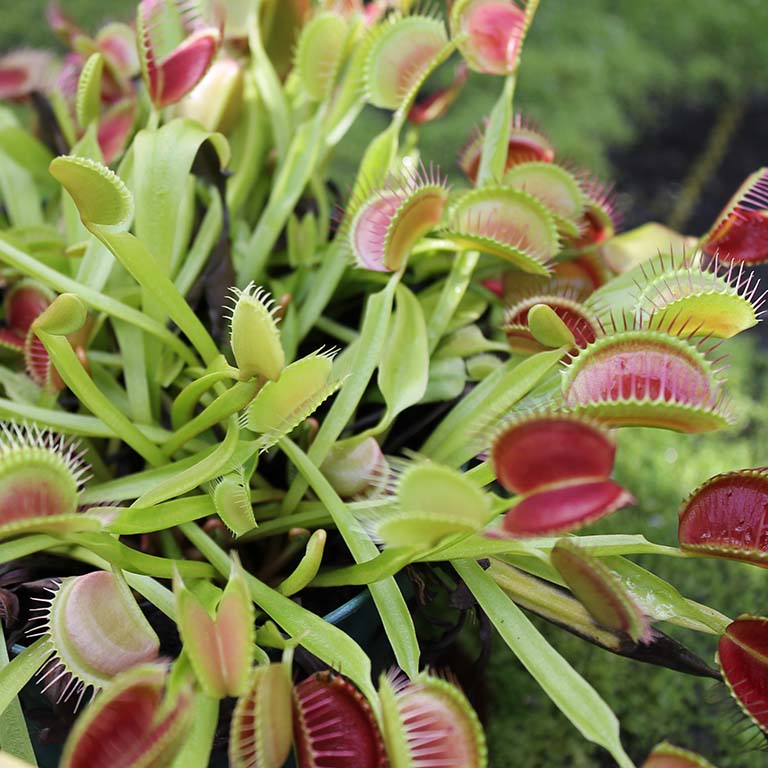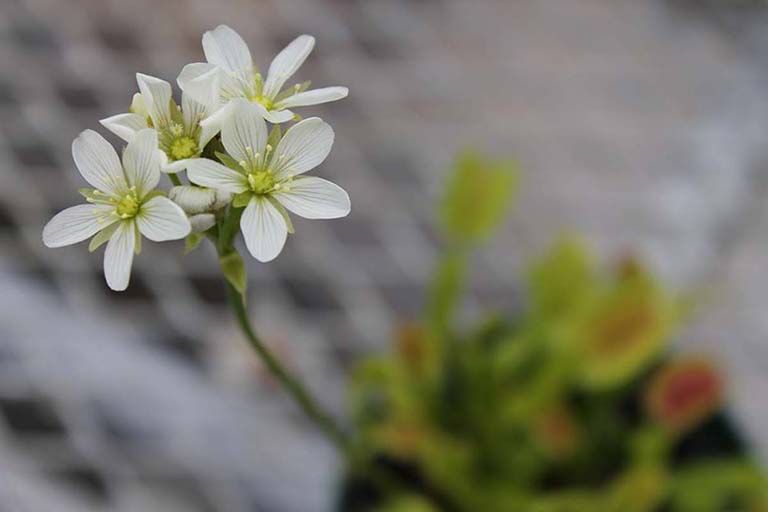Family: Droseraceae
Scientific name: Dionea muscipula
Common name: Venus flytrap
Native of: U.S. states of North and South Carolina
Greenhouse location: Room F
Family: Droseraceae
Scientific name: Dionea muscipula
Common name: Venus flytrap
Native of: U.S. states of North and South Carolina
Greenhouse location: Room F

Native to the U.S. states of North and South Carolina, Dionaea muscipula's small range is in "wet savannah" habitat where the soil is nutrient poor; thus, the flytrap evolved to sustain itself by consuming arthropods.
"Traps" with tiny "trigger hairs" lining their edges grow at the end of the plants' leaves. When an unsuspecting bug or spider trips one of the "hairs," the trap snaps shut and confines the prey to be digested and consumed by the plant. The toothed edges of the trap create an inescapable exit unless the insect is too small. If the insect isn’t large enough, it escapes and the trap doesn’t waste energy on prey that is too small.
Once the prey is digested, the trap reopens and can catch another meal. After 2 or 3 times of catching prey, the trap turns black and the leaf dies.
Please do NOT touch and trigger the traps to close!
According to a Sierra article: "Despite the name, flytraps mostly subsist on spiders and crawling insects like ants and beetles. And the plant is a bit selective about what it eats: Researchers at North Carolina State University have found the Venus flytrap doesn’t consume pollinating insects that can help it reproduce."
The plant requires a dormant period and is somewhat cold hardy. Under the soil, D. muscipula forms very small corms used as storage structures until conditions are favorable for catching prey.
Wild populations of the Venus flytrap are endangered by development and poachers. The plant is easily cultivated commercially through transplants or from cuttings, making it more abundant in captivity than in the wild.
